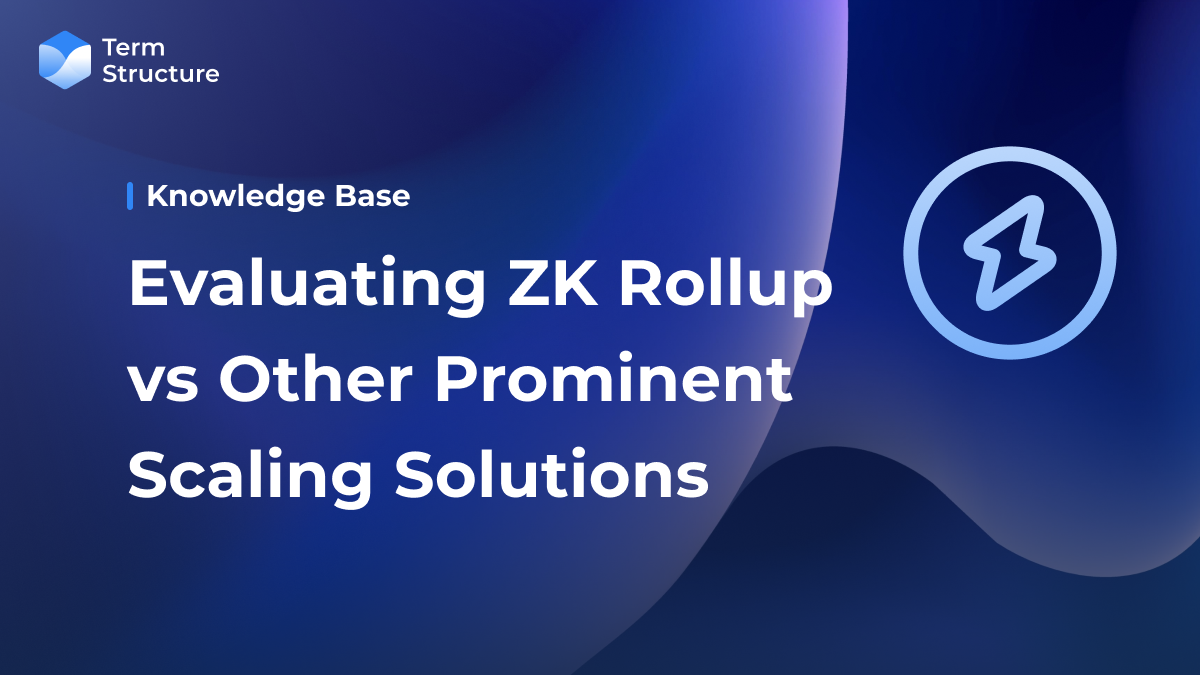Analyzing Digital Asset Security: Evaluating ZK Rollup Versus Other Prominent Scaling Solutions

Scalability and high gas fees remain pressing issues within the Ethereum ecosystem. However, as per the Blockchain Trilemma, security and decentralization must not be compromised. While reducing transaction costs is essential, safeguarding users' assets is of utmost importance.
Different scaling solutions strive to enhance Ethereum's scalability through different approaches, which also impacts how they protect users' digital assets. The level of asset security varies across these methods.
Out of all the scaling solutions, ZK Rollup stands out as the most effective means of improving scalability while simultaneously ensuring robust protection for users' assets.

Scaling Solutions Overview
Ethereum.org organizes scaling solutions into the following categories in its documentation:
- On-chain scaling solution
- Sharding
- Off-chain scaling solutions
- Layer 2
- State Channels
- Rollups
- Optimistic Rollup
- ZK Rollup
- Sidechains
- Plasma
- Validium
- Layer 2
On-chain scaling solution
Sharding, an on-chain scaling solution, is currently under development by the Ethereum team. This method aims to enhance scalability while maintaining security and decentralization. Sharding operates on the principle of dividing transaction processing and storage tasks among various node groups, allowing for parallel computation within the same consensus mechanism. Although promising, it may take years to fully implement and realize this systematic revision.
Off-chain scaling solutions
Compared to on-chain scaling solutions that continue to compute and store transaction data on the Mainnet (Layer 1), off-chain scaling solutions aim to save gas fees and increase data processing capacity by moving the computation or storage of transaction data away from the Mainnet.
Regarding asset security, the key distinction between Layer 2 scaling solutions and other approaches, such as Sidechains, Plasma, and Validium, lies in whether the transaction data is relayed to Layer 1 to inherit the security provided by the consensus mechanism on Layer 1.
Sidechains, Plasma, and Validium
Transaction data in sidechains exists entirely outside Layer 1. As sidechains have their own consensus mechanisms, they do not inherit the security of the Mainnet.
Both Plasma and Validium store transaction data in centralized databases.
In Plasma, transaction data is stored in a centralized database, and the operator periodically sends the data to Layer 1. However, the operator could potentially conceal the data.
In Validium, transaction data is stored by trusted third parties known as Data Availability Committee (DAC). Despite this, there is still a risk that off-chain data could be manipulated by a malicious operator, preventing users from withdrawing their assets on the Mainnet.
Layer 2 solutions
Layer 2 scaling solutions store transaction history and balance data on Layer 1, enabling users to withdraw their assets on the Mainnet. In this regard, Layer 2 solutions outperform other off-chain alternatives.
State channels and rollups are the primary Layer 2 solutions.
State channels allow two parties to conduct transactions over a specific period, executing transactions via a P2P protocol outside of Layer 1, and submitting the final balance to Layer 1. This approach reduces gas fees, but the transaction data on Blockchain is limited.
On the other hand, rollup solutions transmit batched and encrypted transaction data to Layer 1 at lower gas fees.
Optimistic and ZK Rollups
Optimistic Rollup
In Optimistic Rollup, the operator submits aggregated transactions as a Merkle Tree to the Mainnet, significantly reducing on-chain data storage and gas costs.
Optimistic Rollup further reduces gas fees by assuming transactions are valid, eliminating the need to verify transaction data. It encourages users to identify invalid transactions by offering economic incentives. If a user discovers an invalid transaction, they can submit a "fraud proof" on the Mainnet to challenge the transaction outcome. If the challenge is validated, the rollup is reverted, the operator faces penalties, and the user receives a reward.
ZK Rollup
ZK Rollup is a promising Layer 2 scaling solution that effectively reduces gas fees on Layer 1 without significantly compromising security. It operates by consolidating multiple transactions into a Merkle Tree and generating a proof for the Merkle Tree, which allows verification through a Layer 1 smart contract. By maintaining the verified and highly compressed transaction data on Layer 1, users' asset security is ensured.
ZK Rollup employs "Zero-Knowledge proofs" to securely bundle transactions. Essentially, the system generates a proof that the inputs and outputs of a group of transactions are valid without disclosing the actual transactions. This substantially reduces the data stored on the blockchain, enhancing efficiency.
ZK Rollup Guarantees Assets Security
Compared to other scaling solutions, ZK Rollup provides superior security for users' assets.
Unlike Plasma and Validium, which heavily depend on centralized databases or trusted third entities, ZK Rollup enables transactions to be validated directly on the Blockchain.
Optimistic Rollup reduces gas fees but assumes all transactions are valid, relying on economic incentives to ensure data correctness and integrity. Without a fraud proof, the integrity of the data cannot be guaranteed.
In contrast, ZK Rollup ensures the validity of all transaction data through zero-knowledge proof while also reducing gas fees. It relies on cryptography and mathematics rather than economic incentives. Consequently, users' assets remain secure on the Mainnet, and they can withdraw their assets without relying on the presence or trustworthiness of operators.
Term Structure utilizes ZK Rollup as its scaling solution to not only reduce gas fees but also ensure the security of users' assets. By implementing the custom zkTrue-up mechanism, users can maintain the safety of their assets without concern for the operator's service availability.

